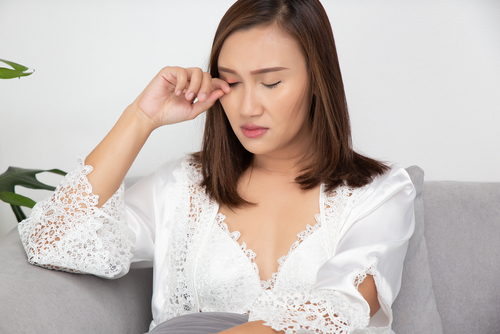How Do You Know if You Have Blepharitis?
Do you notice that your eyelids tend to get inflamed or have a flaky discharge? If they do, you may have blepharitis, but you need a doctor’s diagnosis to be sure.
Blepharitis may be unsightly and uncomfortable, but it is not a dangerous condition. That said, you may want to get it treated if you have it.
Keep reading to find out how you know if you have blepharitis and your options to treat it.
What is Blepharitis?
Blepharitis is a condition that causes inflammation of your eyelids. Usually, it affects both your eyes simultaneously and appears as inflammation or irritation along the edges of your eyelids.
Often, it results from clogs in the oil-producing glands that line your eyelids. These glands, called meibomian glands, produce the oil necessary for healthy tears.
If they get clogged, dry eyes and inflammation are the results, leading to blepharitis. Clogged oil glands are one of the most common causes of blepharitis, but there are other causes.
Some of these are infections, allergies, and eyelash mites. Anything that results in a dandruff-like discharge from your eyelids is a cause of blepharitis.
But no matter what causes it, the symptoms are the same. They are usually worst in the mornings and include:
- Blurry vision that should improve with blinking
- Red eyes
- Greasy eyelids
- Flaky skin around your eyes
- Light sensitivity
- Frequent blinking
- Crusty eyelashes
- Itchy eyelids
- Watery eyes
- Burning or stinging in your eyes
If you experience any of these symptoms or have a combination of them, you could have blepharitis.
How Do You Treat Blepharitis?
There are a few at-home treatments you can use to manage blepharitis. If those don’t seem to work, then there are prescription medications.
Warm compresses are the most straightforward blepharitis treatment. They can be especially effective if clogged oil glands are causing your blepharitis.
All you have to do is hold a warm, moist washcloth to your eyelids for a minute at a time. Repeat this process two or three times for each eyelid. It should loosen up the clogs and help remove the flaky debris from your eyelids.
Eyelid scrubs are another standard treatment for blepharitis. There are commercial preparations made for blepharitis, or you can make your own at home.
At-home preparations include diluted baby shampoo solution, saline solutions, or boiled distilled water. Your eye doctor can recommend a commercial product if that is what you prefer.
Artificial tears are an over-the-counter option that your eye doctor can help you find. If you think these potent eye drops will help, they can recommend a brand and type that could be effective.
If none of these more straightforward remedies help, prescription antibiotic ointments, eye drops, or pills are options. Your eye doctor can write you a prescription when they diagnose you with blepharitis. They can also help you build a better diet that could ease your blepharitis symptoms.
Do you need help managing flaky, inflamed eyelids? Schedule an appointment at Mid Ohio Eye Physicians and Surgeons in Columbus, OH. Blepharitis is a manageable condition. Discover the best treatment for you!










